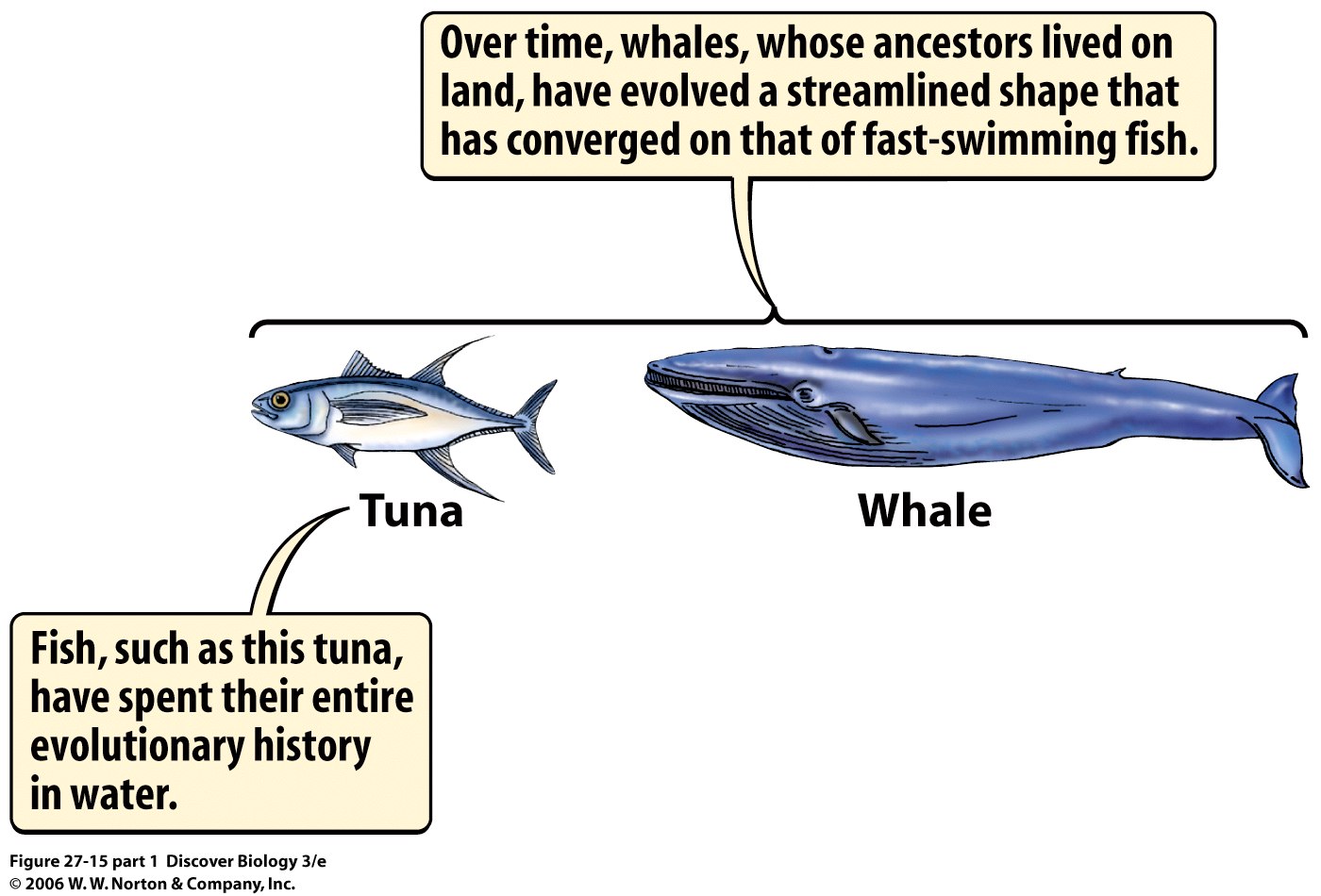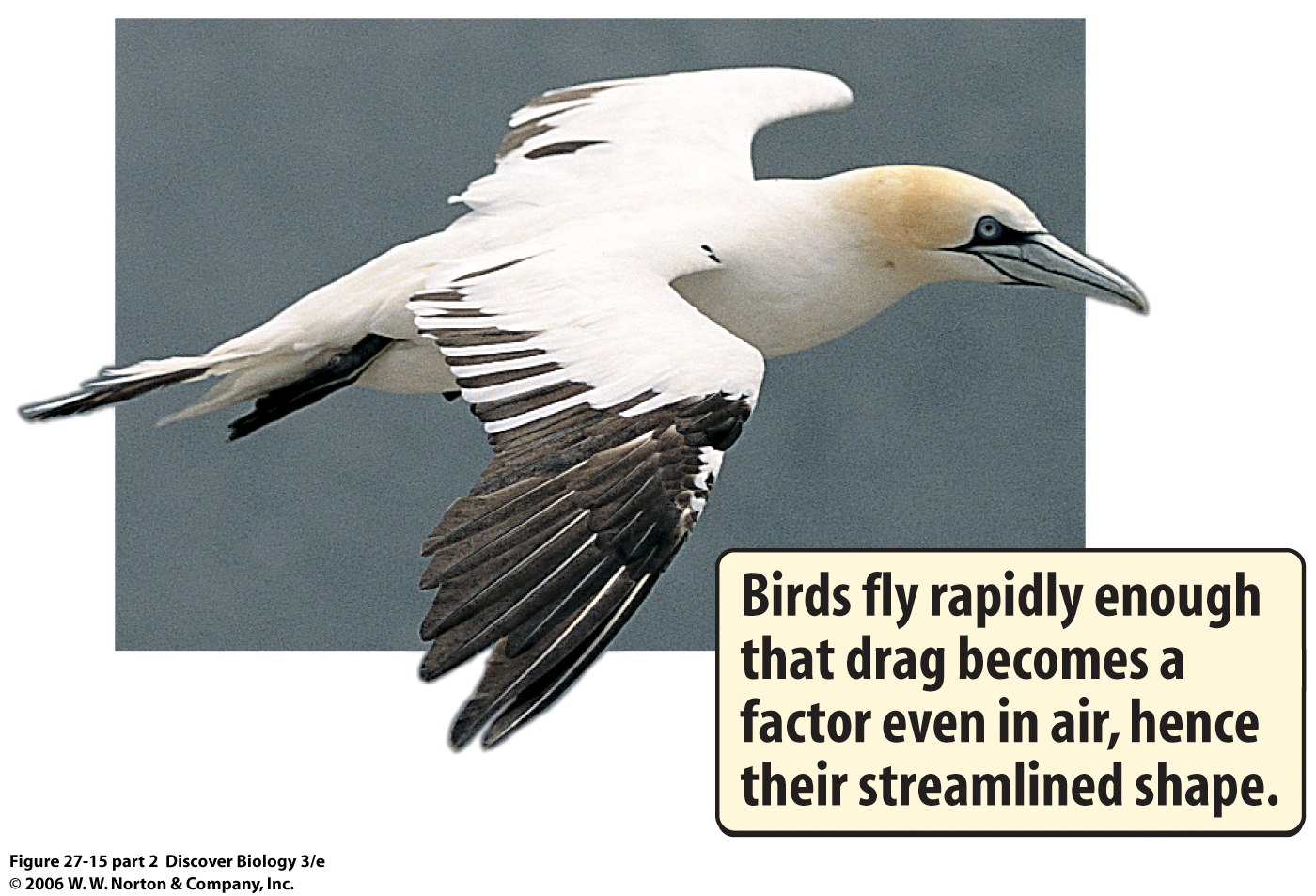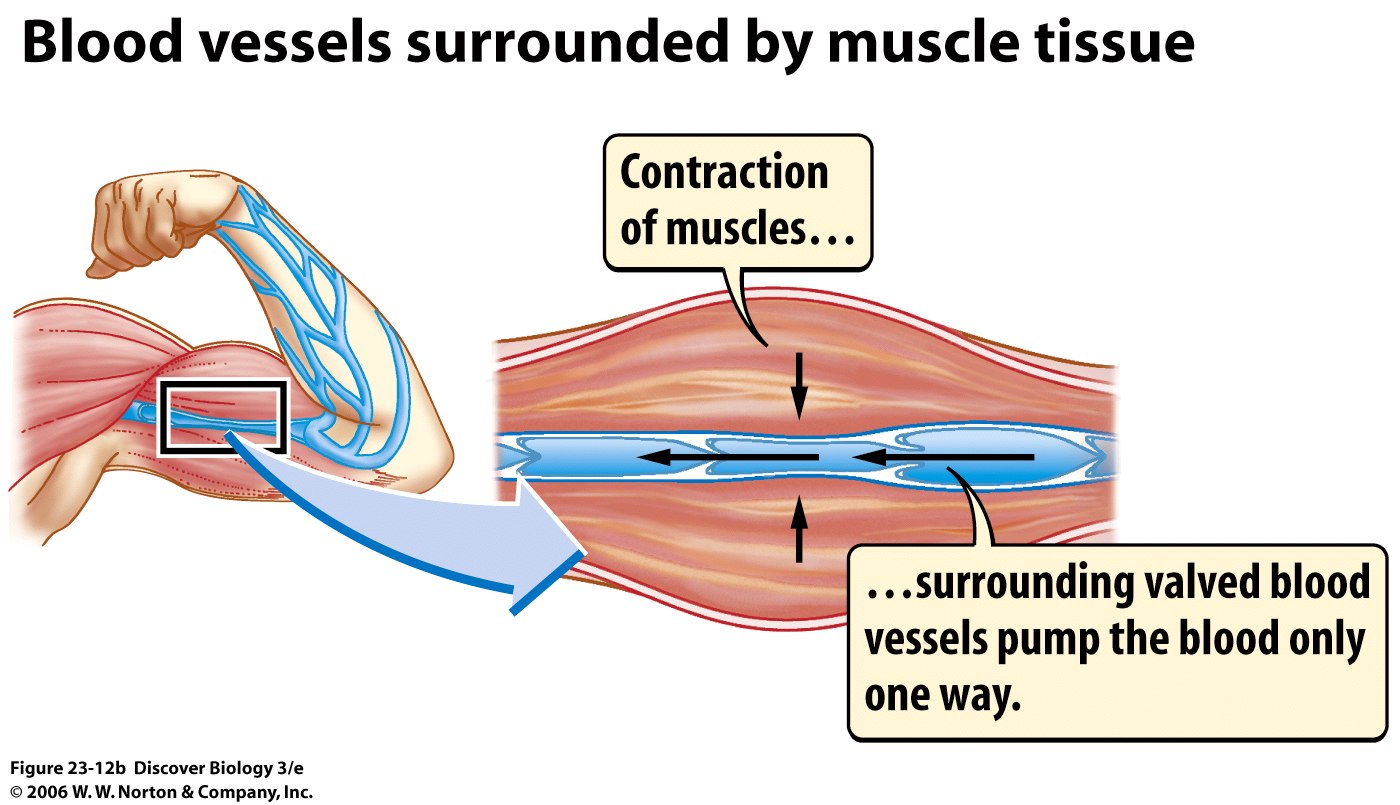
BIO 7: Lecture 19 Preview (Chapters 23 and 27)
Once monomers and gases are inside the organism, they need to get to individual cells.
Muscular pumps help to move fluid more quickly.

Hearts have specialized cardiac muscle, which contracts without fatiguing.

Open and closed circulatory systems: Which is more efficient? Which takes more energy to build?
Closed systems have 3 kinds of blood vessels and can have hearts with 2, 3 or 4 chambers
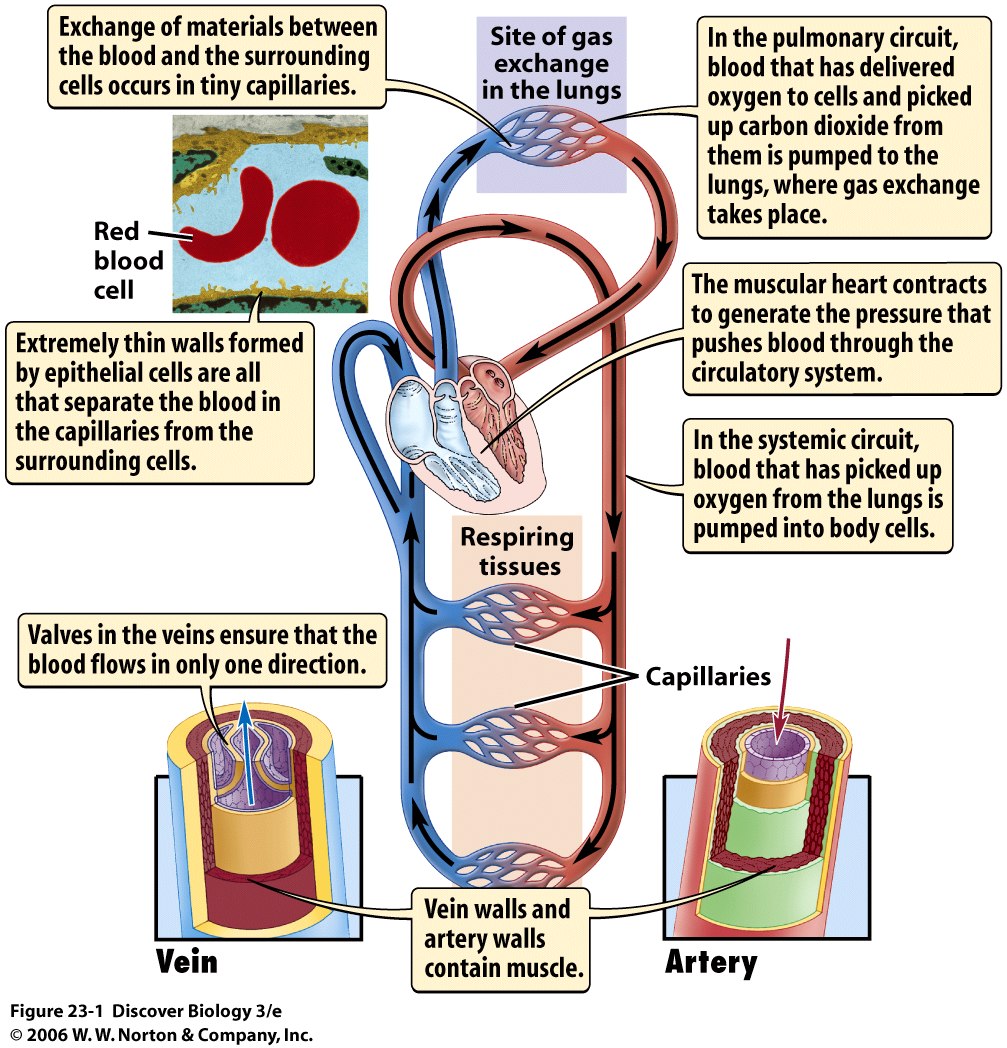
What are the functions of
What is an advantage of having 2 chambers serving the lungs and 2 chambers serving the rest of the body?
Lots of capillaries are found where gases, nutrients, and wastes are exchanged between the blood and the cells
The amount of blood flow for each beat of the heart depends on the diameter of the blood vessels.
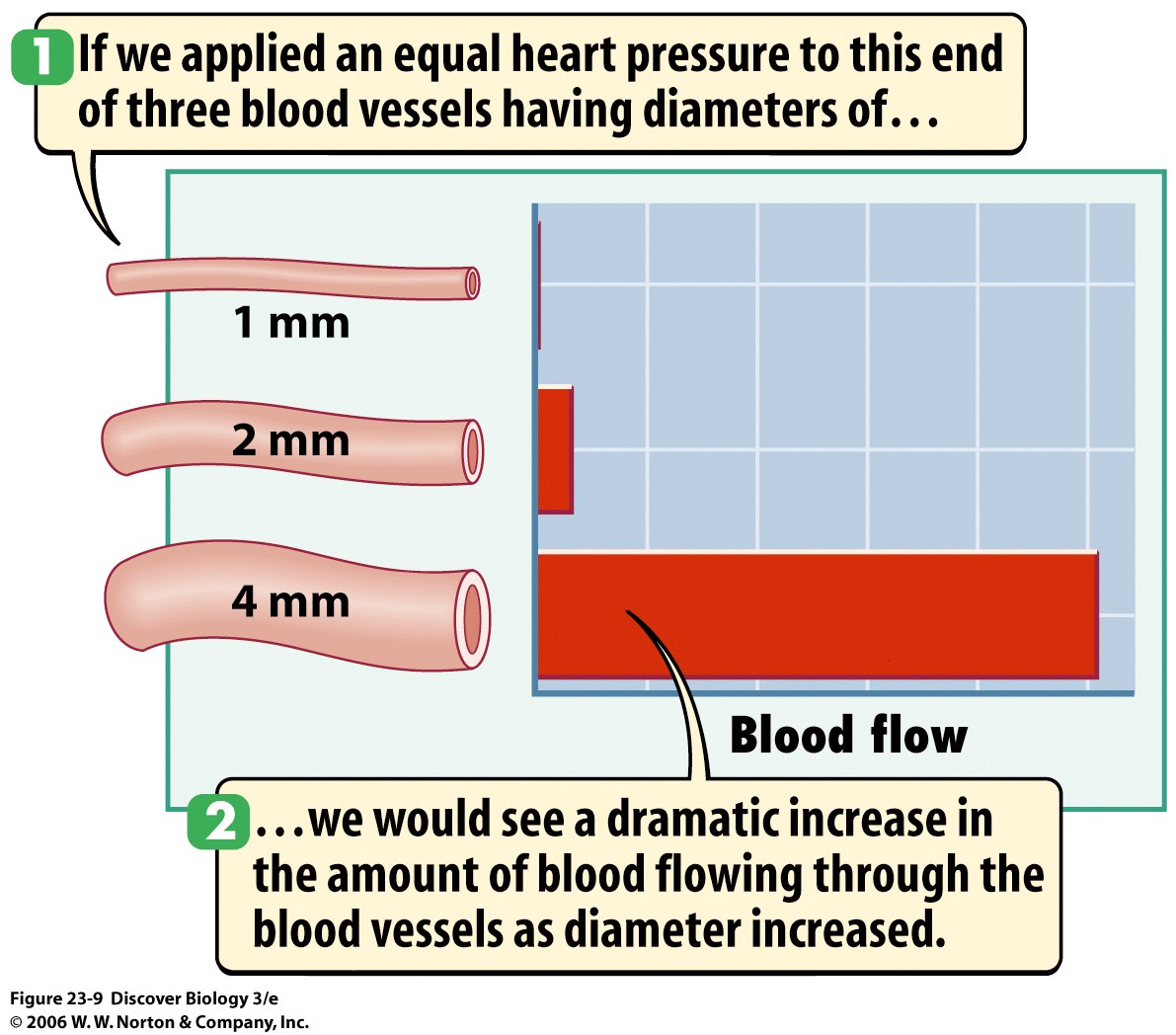
To carry out life activities organisms must move.

Energy from ATP is used to help actin and myosin slide along each other, so the whole muscle contracts. When the muscle relaxes it lengthens again.
Muscles can only move bones or body parts by contracting. So muscles (called opposing muscles) work in pairs to move body parts back and forth.
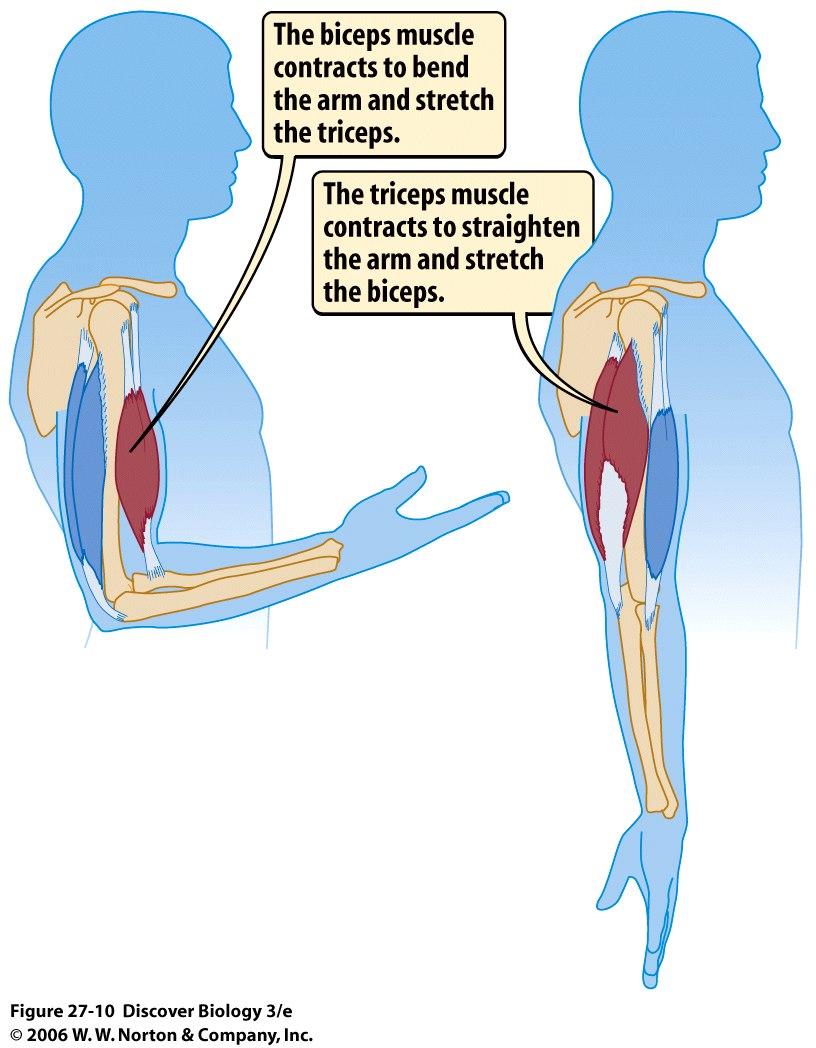
Energy required to move the whole organism depends on the mass of the organism and also how much surface area it has causing drag (air, water, or soil resistance).
